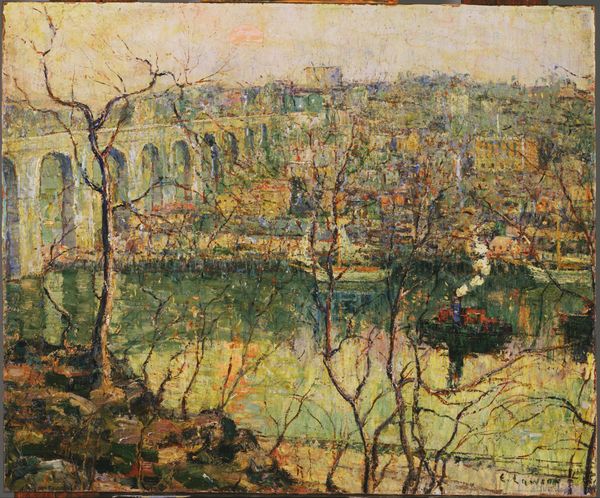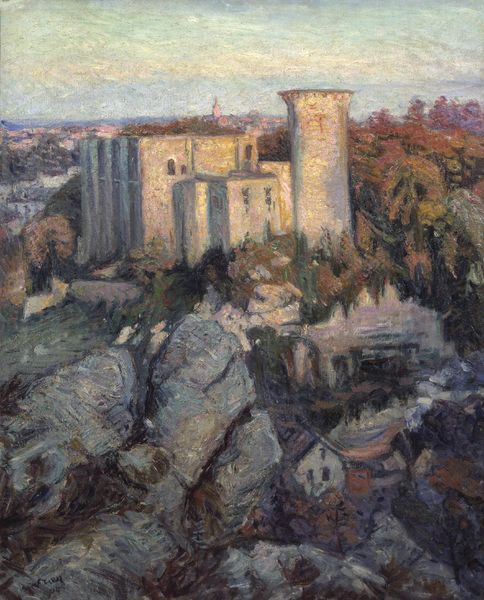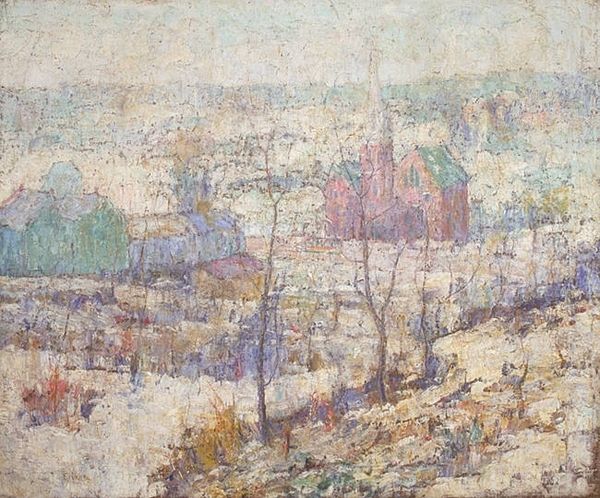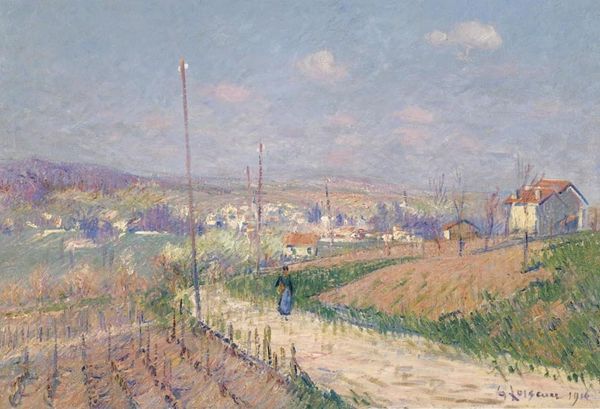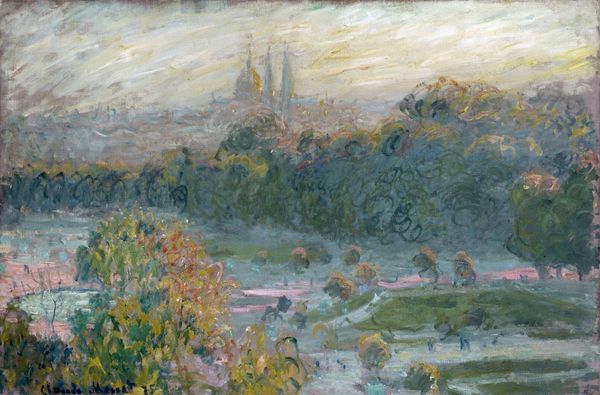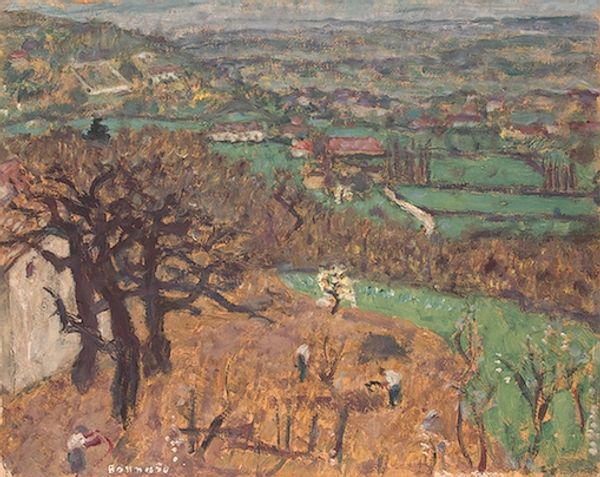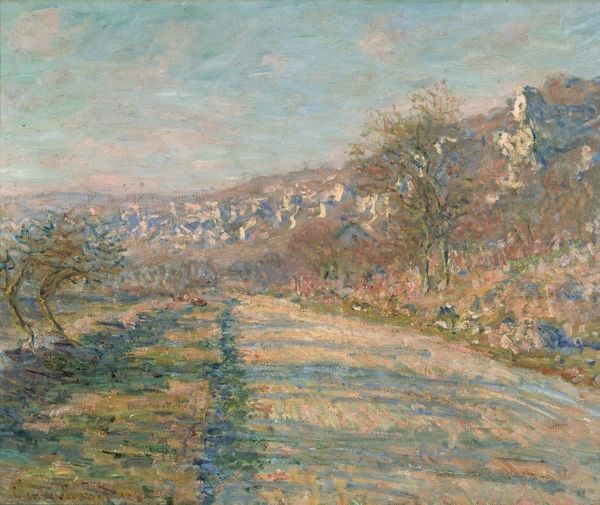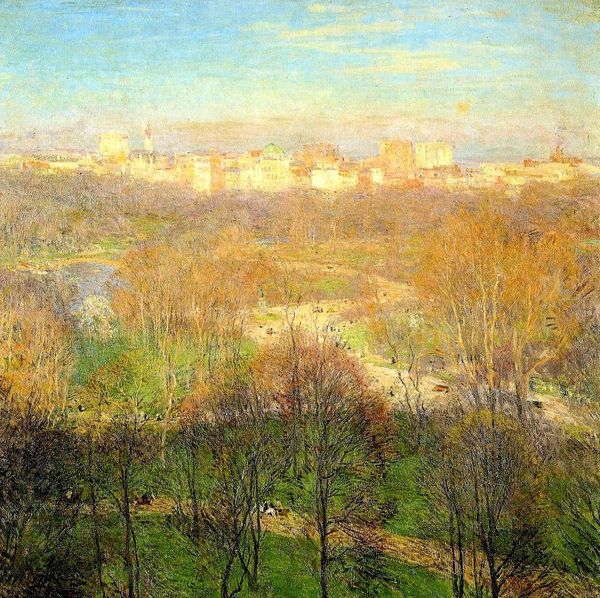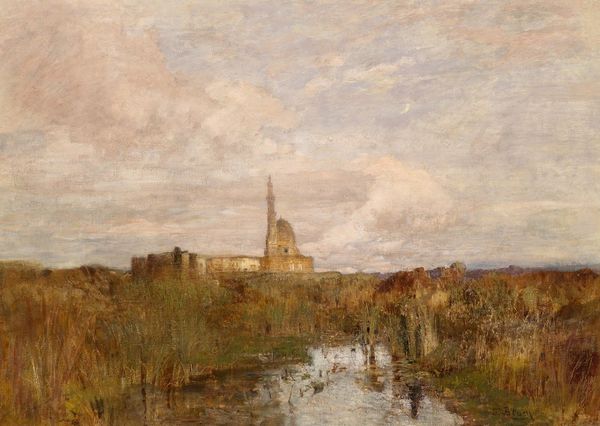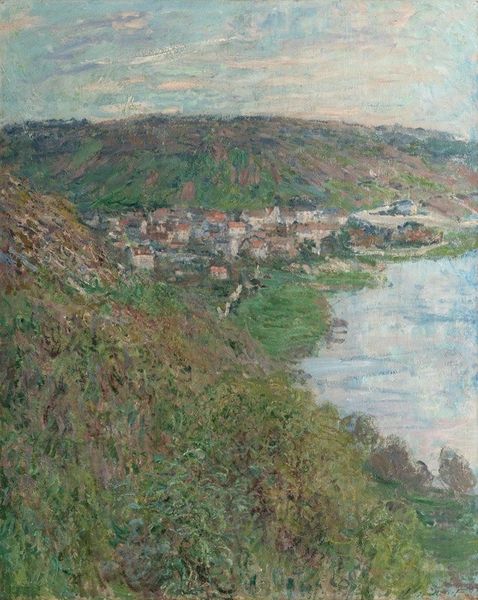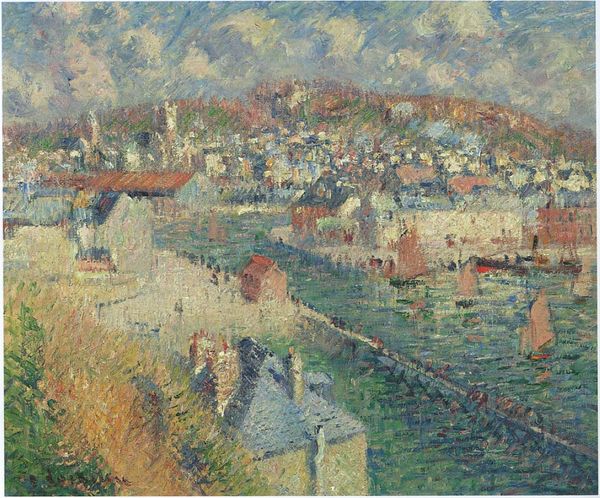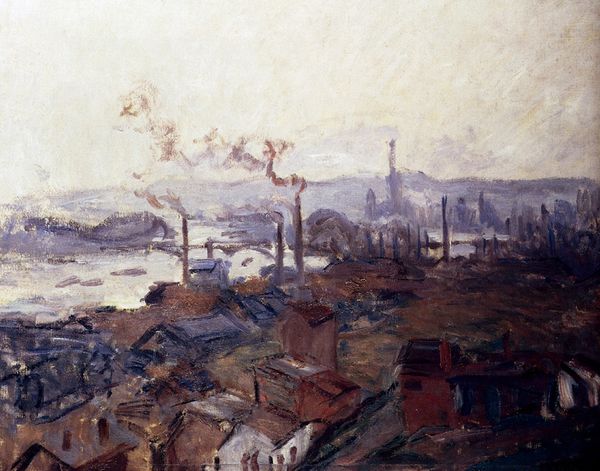
Copyright: Public domain
Editor: So, here we have Ernest Lawson's "Harlem River at High Bridge" from 1915, an oil painting with quite a muted palette. I’m immediately drawn to the texture of the paint – it feels almost gritty. What stands out to you about this particular landscape? Curator: The layering of textures absolutely grabs my attention, but I see beyond simple materiality. The bridge itself is an incredible feat of engineering, but also an ancient Roman symbol, denoting that very crossing into different, yet similar worlds. Note that it isn't just any old aqueduct but something far taller that blends so well with the textures and skyline. Editor: So, is the visual prominence of High Bridge a commentary then on societal progress or... something else? Curator: Perhaps both! Notice the smokestacks rising. Lawson gives them a prominent presence within this panorama. They aren't background noise; in his impressionistic lens they may instead signal industry that literally "lifts" the culture towards new and modern values – or towards the heavens. How does that reading strike you? Editor: I hadn't considered it that way – that’s really fascinating. I was caught up in the bridge itself and the almost drab color scheme, missing what could be perceived as progress, even hope! Curator: Art often presents dualities, mirroring the complexities of our own existence. Perhaps Lawson sought to present that visual tension, between industry and nature or aspiration and reality, with the High Bridge acting as mediator. Editor: Well, I will never see this the same way again, thank you. It’s given me much to consider. Curator: And I have, too, been given fresh perspectives to appreciate about continuity in symbol and imagery.
Comments
No comments
Be the first to comment and join the conversation on the ultimate creative platform.
